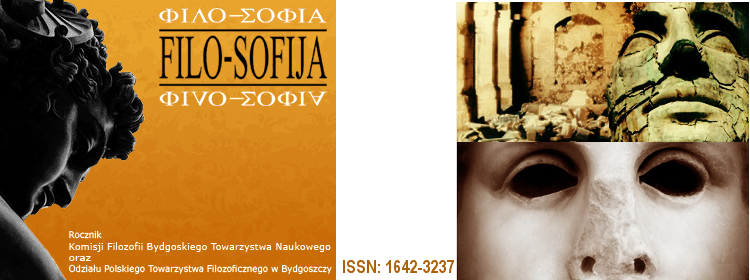Mysterium iniquitatis. Bierdiajew i Dostojewski
Abstract
The objective of the author of the present essay is to show the problem of mysterium iniquitatis, i.e. of the mystery of iniquity (cf. 2 Tess 2. 7) in the works by Nicolas Berdyaev and Fyodor Dostoyevsky. The author considers the problem of evil and freedom from a certain coign of vantage, introducing a category of the freedom-out-of-the-abyss. The term is a leitmotiv for the interpretation of works by Berdyaev and Dostoyevsky, especially when considering in them the encounter of evil and freedom.
Berdyaev claims the works by Dostoyevsky to be permeated by Heraclitean spirit having a paradoxical character. According to Berdyaev, the ideas and main problems of human existence, such as: evil, freedom and suffering, are not in Dostoyevsky rigid terms, but rather “ignited streams”. The world of the “visionary of spirit” (Dostoyevsky as described by Berdyaev) is permeated by an element both ignited and dynamic. In this world, the contradictions, movement and struggle of ideas prevail. In his books, Dostoyevsky shows that the outburst of ideas destroys and wreaks havoc upon his heroes. Moreover, Dostoyevsky in his understanding of human lot sees a creative energy of freedom able to resuscitate and revitalize human spirit.
The category of the freedom-out-of-the-abyss implies that freedom, on the one hand, is able to bring about the destruction of an individual, but on the other hand, that at the bottom of the abyss the light, i.e. Christ descending into hell, can be met. The same category makes it possible to see that a man plunged in the abyss is not deprived of his freedom, for the latter is an undelete able image of God in man (imago Dei). Not even in an infernal realm is the image being destroyed.
These considerations lead the author to the conclusion that a man plunged in the perception of the abyss is able to overcome this perception and return to God. Due to God’s mercy, the hope for apocatastasis is possible both in individual and collective dimension, to wit, the dimension of salvation of the entire creature.
Berdyaev claims the works by Dostoyevsky to be permeated by Heraclitean spirit having a paradoxical character. According to Berdyaev, the ideas and main problems of human existence, such as: evil, freedom and suffering, are not in Dostoyevsky rigid terms, but rather “ignited streams”. The world of the “visionary of spirit” (Dostoyevsky as described by Berdyaev) is permeated by an element both ignited and dynamic. In this world, the contradictions, movement and struggle of ideas prevail. In his books, Dostoyevsky shows that the outburst of ideas destroys and wreaks havoc upon his heroes. Moreover, Dostoyevsky in his understanding of human lot sees a creative energy of freedom able to resuscitate and revitalize human spirit.
The category of the freedom-out-of-the-abyss implies that freedom, on the one hand, is able to bring about the destruction of an individual, but on the other hand, that at the bottom of the abyss the light, i.e. Christ descending into hell, can be met. The same category makes it possible to see that a man plunged in the abyss is not deprived of his freedom, for the latter is an undelete able image of God in man (imago Dei). Not even in an infernal realm is the image being destroyed.
These considerations lead the author to the conclusion that a man plunged in the perception of the abyss is able to overcome this perception and return to God. Due to God’s mercy, the hope for apocatastasis is possible both in individual and collective dimension, to wit, the dimension of salvation of the entire creature.
Pełny tekst:
PDFAdministracja Cytowania | Strony czasopism
